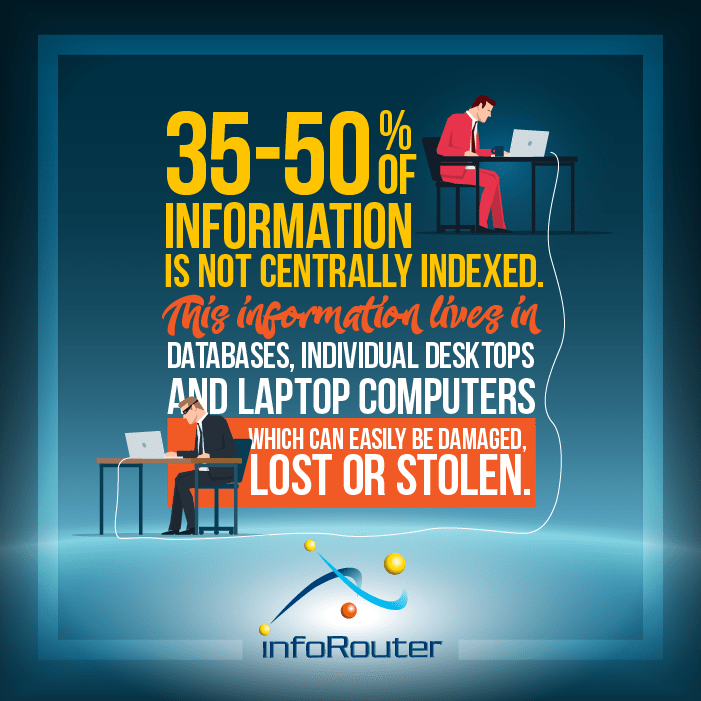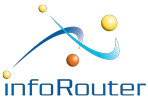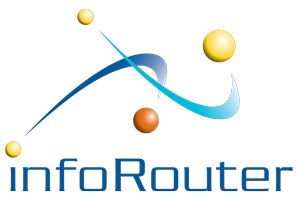Manage your documents like your success depends on it
Because it does!
Many companies do a better job managing and securing their office supplies than they do their business-critical documents.
Most companies do not know why document management is important. Did you know that many companies do a better job managing and securing their office supplies than they do their business-critical documents and files? It's true. The electronic documents that are the very lifeblood of the modern business are all too often taken for granted. Document management has long been ignored by many companies, but in today's rapidly evolving business environment, this is changing fast.
Very few businesses take the time to consider the expenses that they incur on a daily basis and the potential cost savings by implementing a EDMS because of:
- Time and effort wasted in locating documents amounts to a lot more than one would think. Recent research has indicated that nearly 10% of an average office worker's day is spent trying to locate existing information and documents.
- Redundant effort necessitated because it's believed that it is often easier to recreate something than it would be to try to find it.
- Time and effort involved in figuring out who has the latest version of a document, and recovering when various revisions overwrite each other.
- Unnecessary usage of network storage devices, storage space and bandwidth occurs when documents are dispersed across the enterprise, rather than stored in a centralized repository.


If you ask "why is management of documents and information very important?" consider the alternative:
The risks of NOT managing your documents
Very few businesses think about the considerable risks that they expose themselves to:
- Security is applied haphazardly at best, which exposes important information to scrutiny by potentially inappropriate people.
- Critical documents are stored -- often exclusively -- on laptop computers that could be lost, stolen, or damaged at any time.
- Documents stored centrally on Windows network drives, once deleted, do not go into a recycle bin as commonly believed. They simply disappear, and must be restored slowly from tape backups (if you are lucky enough to have those).
- No record exists of precisely who has viewed and/or edited a document. It is therefore impossible to audit a business process to uncover mistakes or inefficiencies.
Consider the facts above and find out how you are affected by not having a plan in place to manage your documents more effectively.
Very few organizations have implemented a robust document management software solution that can deliver real results. Talk to Active Innovations about how you can vastly improve your efficiency in managing your business documents.
Key Features and Components of Document Management
- Document Capture and Scanning: Converting physical documents into digital format using scanning or capturing software. This also includes indexing documents using Optical Character Recognition (OCR) for easy retrieval.
- Storage and Organization: A centralized single source of truth repository for storing documents with proper classification, folder structure, and Meta Data to make retrieval efficient and organized.
- Version Control: Managing changes to documents over time, keeping track of different versions, and ensuring users have access to the most current document.
- Access Control and Security: Setting permissions to restrict access to sensitive documents based on user roles, ensuring only authorized personnel can view or edit certain files.
- Search and Retrieval: Advanced search functionality to quickly locate documents using metadata, keywords, or content within documents.
- Workflow and Collaboration: Automated workflows for document approvals, reviews, or other processes, enabling seamless collaboration among team members and ensuring timely action on tasks.
- Compliance and Retention: Tools to ensure documents are managed according to regulatory requirements, with retention policies for archiving, disposition, and legal holds to ensure compliance.
- Audit Trails and Reporting: Tracking document history, user actions, and changes to maintain accountability, with reporting tools to analyze document use and adherence to policies.
- Workflow and Scalability: Ability to integrate with other software applications like Customer Relationship Management (CRM) systems via its API and scale the document management system according to business needs.
infoRouter encompasses all these key components, providing a complete document management solution that addresses the needs of both regulated and non-regulated organizations. Its comprehensive features, from secure storage to automated workflows and compliance tools, have made it the trusted choice for businesses of all sizes, ensuring efficient document handling, secure access, and seamless collaboration across teams.
Better customer service
An effective document management strategy can improve customer service. Customer service staff can access the central document repository to retrieve the latest approved versions of documents they need to provide accurate information very quickly. With proper document categorization, staff can drill-down into vast amounts of documents which would be nearly impossible to do with paper documents. A DMS that can handle all types of documents and provides many different document retrieval options can help speed up customer service and customer satisfaction. Being able to pull up relevant documents using advanced search capabilities is key in handling calls and inquiries. Organizations that use advanced document management solutions create an unfair competitive edge over their competition.
Better Collaboration
Efficient document sharing is essential for effective collaboration. A collaborative environment improves business operations and Efficient Workflows are essential for collaboration. Being able to route documents to the right people for approval workflows, the ability to assign tasks which are tracked and measured improves document management processes removing the traditional friction caused by having to chase down documents in physical storage like filing cabinets. Document Distribution to all stakeholders when documents are modified is one of the important features of better collaboration.
Ensuring Compliance and Efficiency Across All Business Functions
If you are in a regulated industry, you are likely bound by many regulatory requirements and compliance with regulations is not an option. If compliance with industry standards is important, compliance with legal requirements is even more critical.
All of the regulatory bodies and their regulations are directly related to document control and document management because they impose specific requirements on how organizations handle, store, retain, and secure their documents and records.
- General Data Protection Regulation (GDPR)
- Health Insurance Portability and Accountability Act (HIPAA)
- Sarbanes-Oxley Act (SOX)
- Financial Industry Regulatory Authority (FINRA)
- Gramm-Leach-Bliley Act (GLBA)
- Food and Drug Administration (FDA) Regulations
- International Organization for Standardization (ISO) Standards
- Federal Trade Commission (FTC)
- Occupational Safety and Health Administration (OSHA)
You must be in control of document versions, making sure that only authorized users access sensitive documents. Document Retention and Disposition Schedules is a hard rule you cannot ignore. If you are trying to be ISO Document Control Certified, then you better have your document processes down to a science.
If you are trying to be ISO Document Control Certified, then you better have your document processes down to a science.
A powerful software platform like infoRouter provides secure access to digital documents while meeting compliance requirements, ensuring business continuity and reliability. Acting as a central source of truth, the software platform enables teams to access documents at the right time without any confusion.
infoRouter's core functions manage a wide range of file types, covering everything from document security and access control to efficient routing, retrieval, and version control. This means users can share documents easily, track previous versions, and maintain a single source of information, all while keeping sensitive information protected. The software also enhances efficient collaboration by allowing team members to work seamlessly on projects, regardless of their location, with access to up-to-date files.
For more information on Regulatory Compliance and how infoRouter can help, click here:
infoRouter Regulatory Compliance Solutions.
Additionally, infoRouter supports smooth document routing, ensuring that every document passes through the correct workflow and approval processes, and that users can quickly retrieve the information they need. This functionality streamlines operations, helping organizations meet regulatory requirements effortlessly and securely.
infoRouter's role in improving customer service is evident in the quick retrieval and sharing of documents, ensuring prompt and accurate responses to customer inquiries. By digitizing paper documents, it saves storage space and supports a more efficient, centralized document repository.
Ultimately, infoRouter enables businesses to effectively control, categorize, and store large amounts of documents, improving workflows and providing the necessary support for compliance with regulations, enhancing user adoption, and fostering a collaborative environment.

